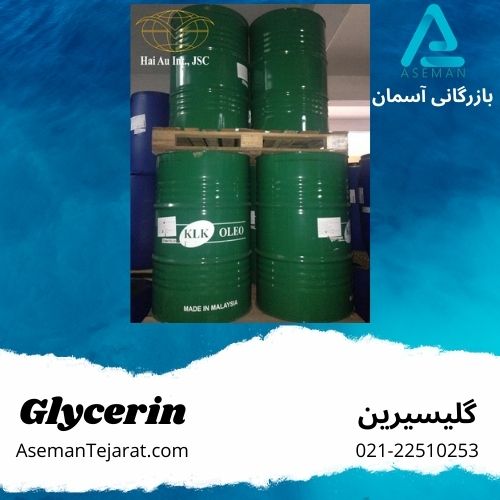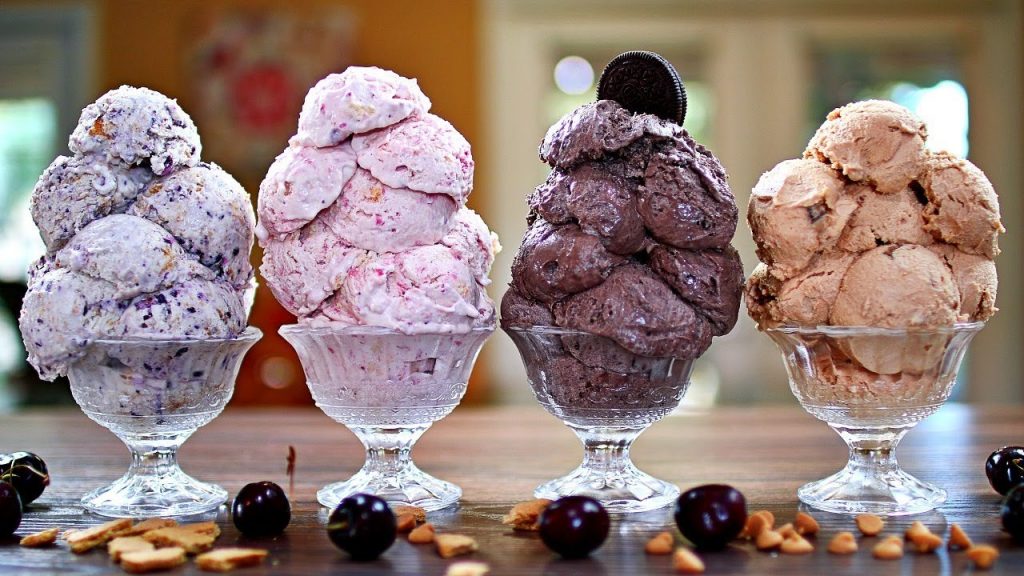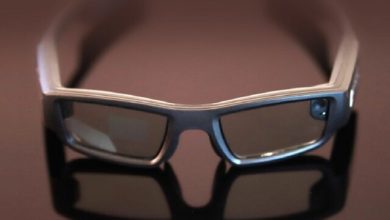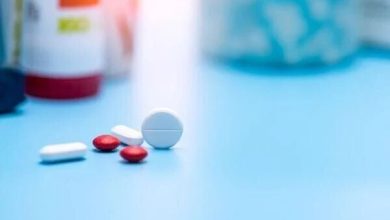Glycerin and its uses in the food industry
The purchase of synthetic glycerin is very prosperous due to its wide role in the production of various products in various industries. Dear Asman Trading readers, by reading this article, you can learn about this material and its wide applications. For anyone familiar with the food and beverage industry, organic glycerin should be familiar due to its countless uses.
This substance helps prevent sugar from crystallizing, adds texture and sweetness to many food and beverage products, acts as a humectant, solvent, preservative, etc. Sometimes he writes glycerol and reads glycerol, which is a simple polyol and sugar alcohol that works well as a flavor carrier.

What is glycerol?
Glycerol is derived from glycerol, a simple polyol which is an odorless and colorless viscous liquid. Polyol is a type of carbohydrate commonly called a “sugar alcohol”. As we have said, this substance is a simple polyol compound; This means that it contains several hydroxyl groups. There are three hydroxyl groups, to be exact, in its structure. For this reason, it is known as trihydroxybutyrate.
Its structure is highly soluble in water; As a result, they also use it as a dehumidifier. This means that it can absorb and trap water molecules from the environment. In nature, glycerol is the so-called backbone of fatty acid esters. Therefore, instead of three hydroxyl groups, three fatty acid molecules are linked.
Glycerol can be described by several properties. These features include:
- colorless
- transparent
- odorless
- sticky
- non-toxic
- sweet taste
- moisture absorption
It has a unique set of physical and chemical properties. It dissolves easily in water, making it ideal for use in water-based formulations. Having the chemical formula (C3H8O3), its molecular structure consists of three carbon atoms, eight hydrogen atoms and three oxygen atoms, which allows it to retain moisture well. It is also odorless, colorless, and has a high viscosity and boiling point (290°C).
Glycerin is used
The mentioned features of this material mean that it has wide applications. It is mostly used as a sweetener in the food industry. It also acts as a humectant, a substance used to retain moisture. So it is commonly used in situations such as the production of humidifiers. In addition, it is used in pharmaceutical formulations, as a softener, and as a major component in resins used in the manufacture of protective coatings for automobile paints.
dynamite
Glycerin can be used to make your favorite pudding, but it is also used to make some of the most powerful explosives known. When you add this substance to a concentrated mixture of nitric and sulfuric acid, it reacts to form nitroglycerin (C3H5 (ONO2) 3). It is a major component used to make dynamite and joins nitrocellulose in propellants such as rockets.
Nitroglycerin contains 19% nitrogen and is a sufficient source of oxygen atoms. These atoms oxidize the carbon and hydrogen atoms while releasing nitrogen, resulting in a powerful explosion associated with dynamite.
cosmetic production
This substance is used in the production of products such as emollients and skin care products. As already mentioned, it has a high solubility in water and absorbs moisture; As a result, it is commonly used as a moisturizer and softener. Since glycerin is non-toxic, it can be used on any part of the epidermis, including the mucous membrane. All these features make glycerin suitable for a variety of beauty applications.
Why is glycerin added to beauty care products?
The reason for adding glycerin to beauty care products is that it helps retain moisture and is suitable for all skin types and has no side effects. The price of glycerin is cheap and everyone can buy glycerin. Glycerin is non-toxic and used in skin care products for babies and children, and the hydrating glycerin formula makes it the best product for dry skin. Because it absorbs just the right amount of moisture for hydration and also prevents moisture loss.
The use of glycerol in the production of food products
The moisturizing properties and sweet taste of glycerin give it a variety of applications in the food industry. It is used as a wetting agent, emulsifier, sweetener and preservative.

sweetener production
One of its most distinctive features is the sweet taste of this substance. In fact, it’s 60% as sweet as other refined sugars with fewer calories per teaspoon. It is used in the food industry as an artificial sweetener. It is added to ice cream and most processed foods. It is commonly used in baking, especially to make fondant softer, sweeter and stickier after freezing.
emulsion
In the food industry, emulsifiers are used to prevent the separation of oil and water in a mixture by acting as a medium. This helps to form stable, homogeneous emulsions that last longer. For example, when making bread, emulsifiers are very important to improve texture, moisture, crispness and shelf life.
For example, monoglycerides, and glycerol esters of fatty acids, are used as emulsifiers to help stabilize dough and prevent rancidity. Emulsifiers also play an important role in the texture of bread because they interact with gluten to strengthen the protein network. It is also important in baking cakes and pastries because it improves the retention of gas bubbles. This is what helps make a light and crunchy product.
Emulsifiers make bread last longer by creating a richer, more stable formula. The glycerol structure, moisture absorption and sweet taste make it an ideal emulsifier in this way.
humidifier
Glycerin’s properties as an emulsifier are enhanced by its humectant properties, which add moisture to bread, pastries, and other baked goods. It also helps preserve food by absorbing water from the environment and thus reduces the possibility of it becoming stale.
The consumption of glycerol in agriculture
Preserving tree leaves with glycerin
Glycerin is used in the manufacture of ornamental roses and the treatment of ornamental leaves, and glycerin helps preserve the substances in plants and prevents cellulose from drying out completely, making the plant last longer. Almost half of the plant’s weight is water, which prevents it from being brittle, and if the water is less, it causes the plant to dry out, which is what prevents it from using glycerin.
Humectants fall into 4 categories:
- Sugars such as sorbitol and sucrose
- Calcium chloride salt. Calcium Sodium Chloride 2
- Polyols, glycerol and glycols
- ammonium compounds
Glycerin is the most efficient humectant because it has the highest water absorption capacity. Diethylene glycol and polyethylene glycol are used as thinners for flowers and ornamentals.
Glycerin in the medical industry
Glycerin has antimicrobial and antiviral properties and is approved by the Food and Drug Administration. It is effective in wound healing and reduces wound inflammation approximately approximately two hours after application and is approved for post-burn care except for third-degree burns. Glycerin is found in cough syrups, toothpastes, mouthwashes, skin care products, shaving cream, hair care, and soaps, and is used in solid forms as a preservative for tablets.
Glycerol is also used in blood banks as a barrier to red blood cell clotting, and glycerin soap is used for people with dry skin because its moisturizing properties prevent skin drying, and glycerin suppositories are used as a laxative. By drawing water into the large intestine, it stimulates crystals and so they are drained. Orally taken cholesterol is often mixed with juice to reduce its sweet taste.
Purchase of glycerol is used to produce nitroglycerin, which is the main component of various explosives such as dynamite, and glycerol is used as a filler for pressure gauge. Earwax is a substance secreted by glands in the skin of the ear canal, sometimes causing the ears to close, and doctors use drops containing glycerol to wash the ears.
glycerol in industry
Glycerol is mainly produced from biodiesel, and therefore can be used as a renewable fuel for industrial materials. Glycerol is the main ingredient in resins, tooth enamel and building facade coatings, so it causes market demand for glycerol, and the biodiesel cell industry is expected to exceed half a billion dollars by 2024.
Due to the fact that glycerin is the main ingredient in body wash and shampoo and is a major recycling factor, we will see an increasing increase in this industry. The market for buying glycerin is growing in South Korea, Australia, Japan, India and China. In the tobacco industry, e-liquid components are also used to make e-cigarettes. In the coming years, the size of the glycerol market in Brazil is expected to be large due to the growth of the pharmaceutical industry in that country.
· Film industry
From the sale of glycerin in the film industry, when shooting scenes that have to be seen wet for the design of the plot, a mixture of water and glycerin is used so that the irrigated areas do not dry out quickly.
Glycerin side effects
Glycerin is sold as a natural product and many side effects have not been reported. But there is always the possibility of an allergic reaction. If you have redness and itching when using glycerin, immediately stop using the product and find an alternative product that does not contain glycerin.

Glycerin production method
The need to replace fossil fuels is leading to the development of renewable fuels such as biodiesel. In the years 2000 to 2012, biodiesel production increased from fifteen to 430 thousand barrels. And in the biodiesel production process, glycerol is produced from the transportation of vegetable oils as a by-product. Typically, production of 100 kg of biodiesel yields approximately 10 kg of glycerol with a purity of approximately 50 to 55%.
Currently, glycerol is mainly used as a chemical intermediate for the production of cosmetics, food and pharmaceuticals. Glycerol can be produced using various processes and edible raw materials, for example, it can be made by propylene through several methods such as hydrolysis of oil or obtained by excretion Fatty acids, can also be produced by fermentation of yeasts such as Saccharomyces cerevisiae or bacteria such as Bacillus subtilis.
Dangers of glycerin
Glycerin is generally considered a substance that does not require any special precautions to handle, however, it is flammable and also greasy and may be slippery if spilled on the floor.
Safety guide for working with glycerin
In case of eye or skin contact, rinse immediately with water. If swallowed in large quantities, consult a physician immediately. Glycerin is widely used in foods, so it is unlikely to be harmful if a small amount is accidentally tasted. When working with glycerin and to prevent contact with the skin and eyes, use a special mask, clothing and glasses.
Storage conditions for glycerol
Keep in a closed container and store at -20°C, it is not considered a dangerous substance during transportation.
How is glycerol produced?
As you know, glycerol is found in nature and can be manufactured artificially.
natural glycerin
This type of glycerol is found in plants and animals. Vegetable glycerine can be obtained from fats found in plants, such as triglycerides. Vegetable oils such as coconut, olive, and palm kernel are examples of vegetable glycerin. While animal glycerol can be produced from the reaction of animal fats with sodium hydroxide in the saponification reaction and as a by-product.
industrial glycerine
Glycerol can be made from propylene in various ways. One of the most important ways to produce it is the chlorination reaction of propylene.

Different grades of glycerine
- Glycerol is a widely used substance in industry, which can be used as a solvent from food to pharmaceutical and health industries. For this reason, according to the intended application, a certain grade and purity of glycerin has been established.
- Crude Glycerin: This grade is suitable for animal husbandry and contains more than 80% glycerol which is indicated by the brown color.
- Industrial grade 95 purity: This type, which is mostly used as an intermediate in chemical reactions, has a gray color and a small amount of water.
- USP / PhEur grade: This grade is used in cosmetics and health products, whose purity level of 99% made it contain the least amount of water, and its characteristic is that it is colorless.
- Edible grade or E422: This type is used in the food industry.










